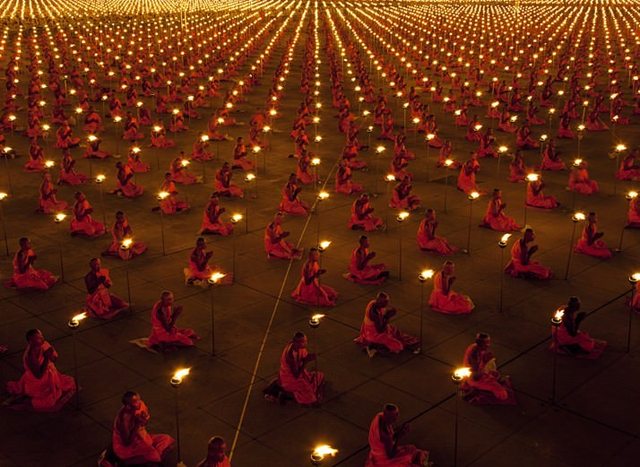Meditation has done more for me than any other practice.
It helped save my life.
Without it, I think I would lose my mind.It has played a key role in my sanity through the first year and a half of my new life in sobriety.
My crazy, noisy, chaotic, relentless and unforgiving mind was one of the things that fuelled my addictions over the years. I just wanted my head to give it a rest.
I just wanted it to shut up!
As a result of meditation practice, I finally have a quiet mind most of the time, and it is amazing.
Like any beneficial thing I encounter that improves quality of life, I want to share it with the world so that everyone can feel the magic that comes from a meditation practice.
While being simple, meditation is not easy at first. At least it wasn’t for me and my nonstop mind.
Here are some tips for how I started my practice.
1. Breathing
In the beginning I would get so caught up in my thoughts, I was forgetting to breathe. Breath is the cornerstone of meditation, it keeps us anchored and present. By focusing on my breath I was gradually able to slow the thoughts racing through my head, and over time it became quiet. I would consciously think “breathe in the moment, breathe out yesterday.”
I would picture the breath traveling through my body, filling up my lungs, oxygenating my blood. When my thoughts would wander, I would smile at my self, give thanks to the thought, and come back to my breath gently. No criticism, no judgement.
2. Mantras
Mantras were my anchor at the start. My mind was forever tripping over tomorrow, later, the things I needed to work on, what I said two hours ago and so on. Sometimes my mantras were as simple as “I am exactly where I am meant to be” or “Everything is okay as it is” and “I am okay.”
It’s that simple.
At the start, I didn’t necessarily believe the words, but somewhere along the journey I started believing them. And now when I use my mantras they comfort me like an old familiar fuzzy blanket and a cup of tea on a cold day.
Like the breath, they bring me to the present and anchor me to the moment.
3. Imagery
I am a visual person. Envisioning pictures in my head—like I mentioned I did with my breathing practice—helped me immensely. As I breathed I would visualize. When I started doing chakra work it helped me to envision each color that is linked to each chakra. Or I would envision a white healing light.
When my practice was geared towards healing it was a crisp, clear waterfall flowing through my chakra system cleansing. When I was aiming for quieting my mind I would picture a crisp mountain lake, one of my favorite places from where I used to live, with the water still and undisturbed reflecting the beautiful sky above.
We can use anything that appeals to us visually.
4. Walking meditation
Like I said, when I first started practicing my head was everywhere but the moment. I was so used to doing things on auto pilot and worrying about things outside my control, I never realized how absent I was in any given moment until I started minding my thoughts. I received wisdom from a 96-year-old lady, Grandma Helen, who told me to try this. “When brushing your teeth, stand there and say “right now I am brushing my teeth. Here I am, brushing my teeth.”
It seemed so silly but I started practicing that. Then I started applying it to all activities. While walking, I would say to myself “I am walking.” I would feel my feet touching the ground. I would look around at the sky. If I was washing dishes, I would pay attention to the warm water and soap suds on my hands. It was a constant vigil at first. Telling myself what I was doing at any moment seemed absurd but it truly worked to help me start being present throughout my daily life.
5. Writing.
I found that by writing out whatever thoughts were in my head before I would practice helped immensely. I am not much of a talker, I keep stuff in my head and analyze and run over and over it which was part of what kept my head so noisy. I needed to know why about everything.
Once I started dumping everything out on paper, my head was quieter when I would sit down to practice. By making to do lists I wasn’t distracted with everything I had to do after I meditated. By journaling, I was less hung up on circling emotions.
And by practicing my mantra of “It doesn’t matter why, I’m not in charge” I stopped having the need to analyze everything to a T.
I remember the day I was sitting on my front porch, and the late afternoon sunlight was streaming through the trees and there was a gentle breeze making the leaves and flowers sway. A bird was chirping, and I was overcome with the pure beauty of the moment, and with the feeling that everything was perfect. Nothing mattered but that very moment and the raw beauty of it. I felt so alive.
Words do it no justice, but that was serenity and contentment I was experiencing.
I was present in that moment.
The pure joy of that moment was amazing.
I knew than that my practice was working.
I have those moments often now, after a year and a half of daily practice. And when I don’t have those moments and I feel crazy and chaotic I can stop and breath mindfully and I immediately feel a bit of that serenity.
Sometimes I can sit amongst chaos and easily slip into my practice and find solitude no matter where I am. Other times I sit down to practice and I start well then my mind wanders and I have to use my earliest practices that I’ve shared here.
Thanks to my daily practice, I no longer beat myself up over this.
Because I am okay exactly where I am.
Relephant:
How to Meditate Every Damn Day. (No, seriously!)
108 Ways to Heal Your Chakras.
Author: Lyndsay Carricarte
Editor: Renée Picard
Image: Author’s own.













Read 0 comments and reply